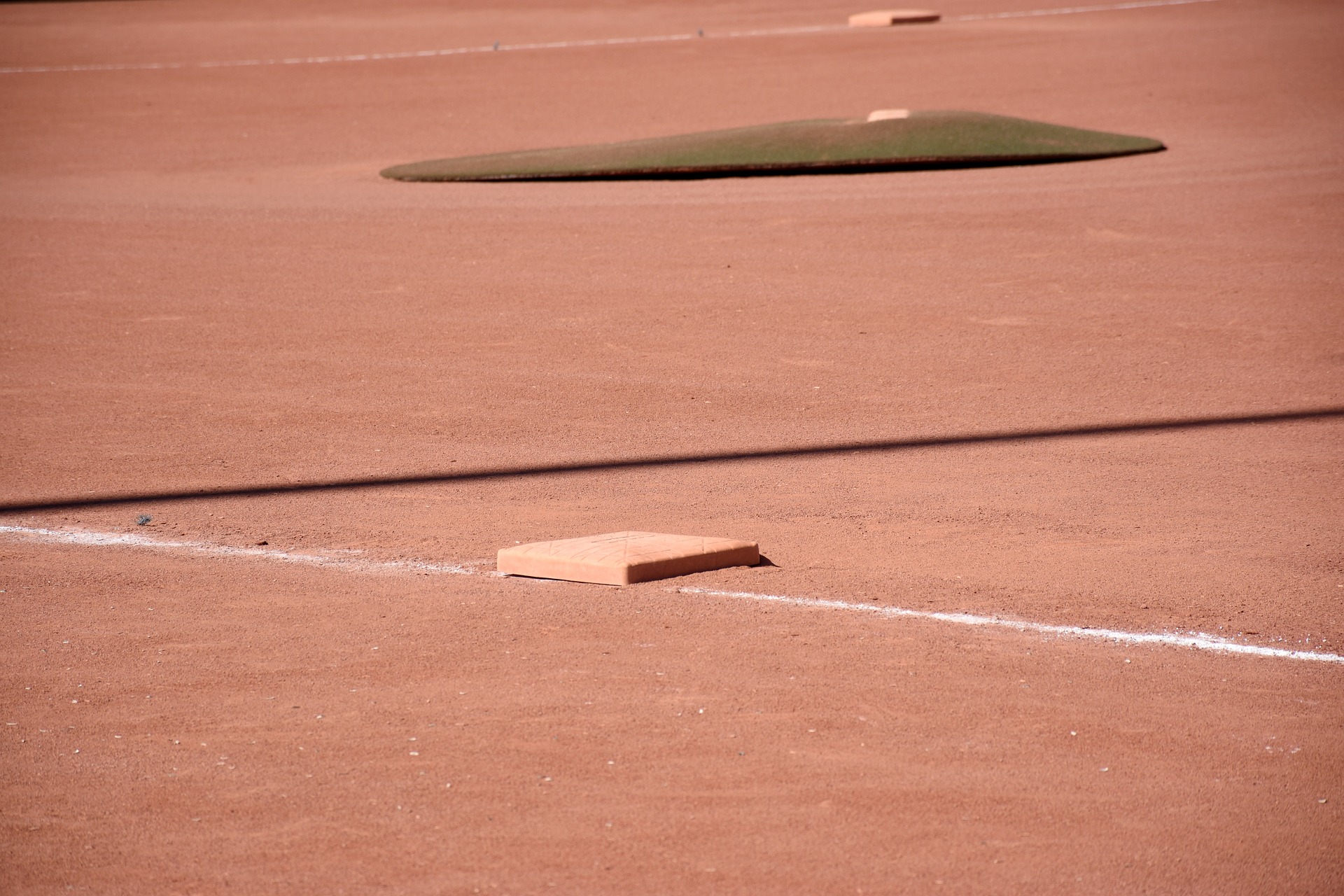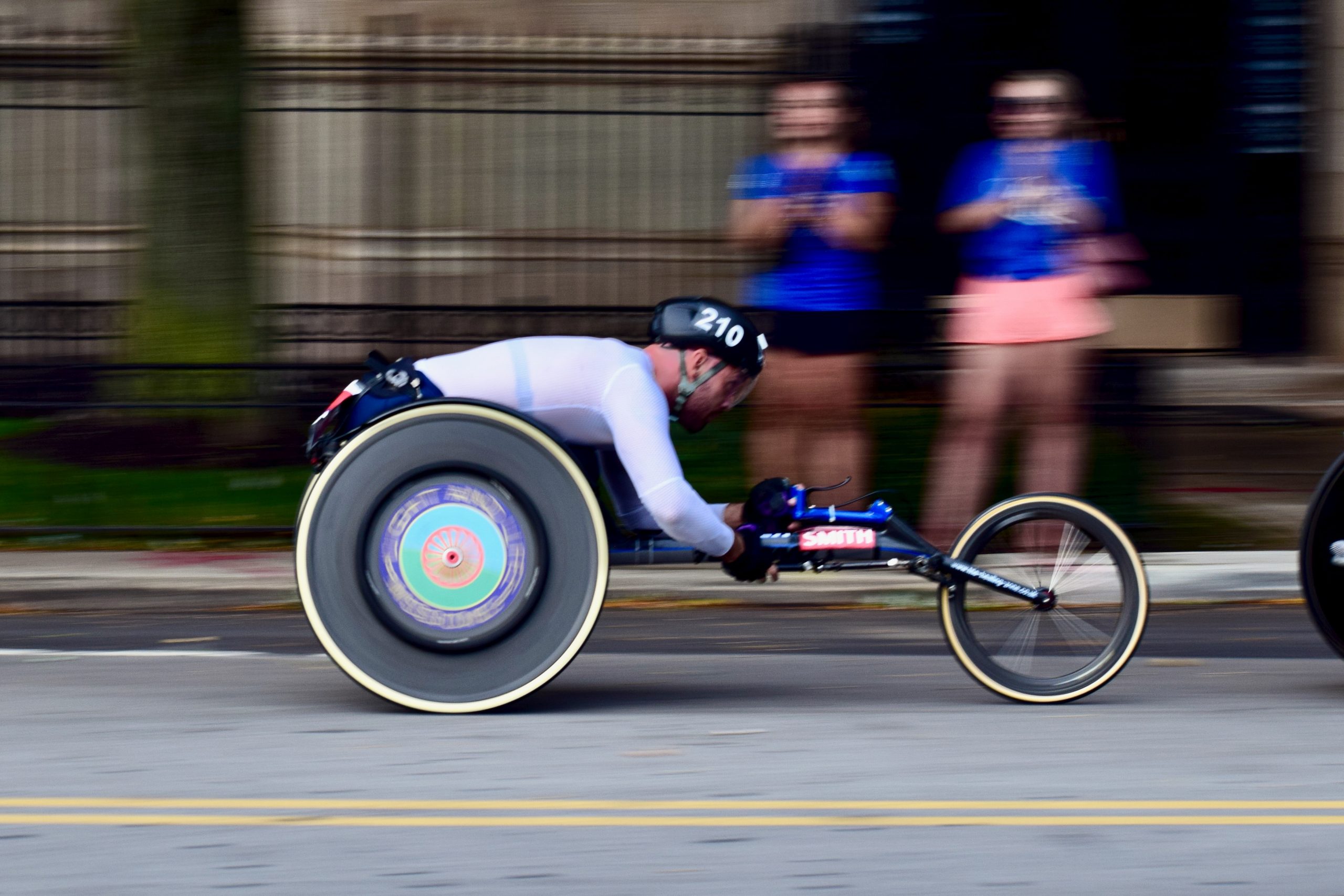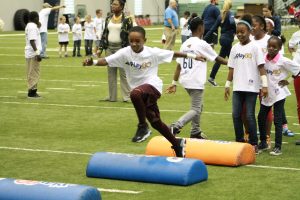4 The Long Struggle for Safe Sport in Canada
Julie Stevens
Bruce Kidd
Themes
Sport is a contested terrain
People have always struggled to make sports safer and more inclusive, despite resistance
The current Canadian campaign for safe sport must be understood in its historical context
Students, teachers, athletes, and coaches must continue to push for reforms
Learning Objectives
When you have completed this chapter, you will be able to:
LO1 Understand the complex, contested history of modern sports—that sports are not socially neutral but have been constructed to advantage some and disadvantage others;
LO2 Understand the contingent nature of the historical process—that campaigns to make them safe and more inclusive can succeed but they also can be defeated or rolled back; and
LO3 Understand the current state of the campaign for safe sport in Canada and what needs to be done to ensure its effectiveness.
Overview
The current campaign for “safe sport” is an expression of a long history of efforts to make societies and sports safer and more inclusive. In their origins in the early modern period, modern sports were violent, rough, and unruly, with success more often the result of brute strength than skill, and participation limited for the most part to European upper-class males and a few male “professionals” from the working classes. Since then, a succession of leaders, participants, and public bodies have sought to reduce or eliminate violence from sports, introduce rules to enhance the fairness of competition and encourage the values of self-restraint and “fair play,” while those excluded from sports, particularly women, the working classes, Indigenous peoples, Black people, persons with disabilities and other marginalized people have fought for opportunities and fair treatment. In 20th century Canada, such efforts included the campaigns against hockey violence, racial discrimination and doping, and for free public recreation, gender equity, and universal accessibility.
This chapter will briefly set out this long, tumultuous history, arguing that while the overall trend has been towards safer, more inclusive sports, there is no guarantee that particular campaigns will succeed. On the contrary, many efforts have been blocked or defeated by those who benefitted from the unsafe and exclusionary status quo, and even successful efforts can and have been rolled back. In Canada, strong policies to prevent and address gender-based violence (GBV) were first proposed in the early 1990s. While Sport Canada required National Sports Organizations (NSOs) in 1996 to take steps to eliminate GBV, in 2016 Donnelly, Kerr, Heron, and DiCarlo found that few NSOs had met that requirement and that Sport Canada had failed to monitor compliance.[1] The chapter will conclude with recommendations for ensuring that the current new initiatives for safe and inclusive sport are sustained.
Key Dates
Sport is a contested terrain. We compete on the playing field and contend for opportunity and meaning. While we are engrossed in the challenges and emotions of a race or a game, it seems like the world and its complications are far away. To enjoy any game, we certainly want it to stay that way. But as students of sport, society, and public policy, we need to understand that the sports we play and how we experience them are inextricably bound up with the same enabling and constraining social structures within which we live. Gruneau (1983) captured this relationship best in his “paradox of play”:
“While one of the purposes of rules is to separate play from reality, the very act of rule construction has the effect of embedding play deeply in the prevailing logic of social relations and thereby diminishing its autonomy. For this reason, the study of play is haunted by a fundamental paradox. Play gives the impression of being an independent and spontaneous aspect of human action or agency and at the same time a dependent and regulated aspect of it.”[2]
That realization is the starting point for this chapter. I will make three extended historical points: (1) modern sports bear the stamp of ongoing debates and struggles about what constitutes safe sport; (2) those struggles for safer sport have always been intertwined with struggles for access and inclusion by those who have been excluded; (3) while “the arc of the moral universe bends towards justice”, as the US civil rights leader Martin Luther King argued in many of his speeches,[3] there is no guarantee that every episode of those struggles results in progressive change. History is contingent, and even very good campaigns have been defeated and victories reversed. From these three points, I will consider the current Canadian struggle for safe sport and draw the lessons for vigilance, study, and activism.
The Origins of Modern Sports

The origins of modern sports can be traced to the early 19th century in the rapidly industrializing societies of Europe and North America. In England, the boys and men of upper-class schools, universities, and clubs gradually transformed the rough and unruly games of the early modern period into what we recognize today. In an earlier time, every community had its own way of playing and games could go on all day. It mattered little because most people never travelled more than 25 kms from their birthplace and life followed the rhythms of agriculture and the seasons. But as the railway and telegraph shrunk distances and inter-town competition became possible, the factory clock drastically reduced leisure and urbanization eliminated open space, organizers gradually agreed upon or imposed standardized rules and equipment, fixed limits to the playing area, the number of players and the duration of games, established a clear distinction between players and spectators, and encouraged an ethic of fair play.[4]
In North America, men who once played bat and ball games under local rules negotiated, embraced, or were forced to accept regional rules. By mid-century, the best known were the New York rules, the Massachusetts rules, the Western rules, and the Canadian rules. By the 1870s, the New York rules pushed out those other ways of playing and by the turn of the 20th century, simply became “baseball”. The same process occurred in the traditional games that became hockey, lacrosse and football.[5] At the same time, physical educators invented completely new sports like basketball and volleyball. So widespread is the acceptance of standard rules today that communities vie for the right to be declared the “home” of sports like hockey, failing to realize that evidence of such play in the early modern era does not constitute origins—simply that people played something similar. The new sports soon spread around the world by trade, imperialism, Christianity, and elite emulation.[6] These processes continue to this day.
The Struggle for Safe Sport
For our purposes, concern and contention about safe rules and conditions have always been integral to the making of sports. Early modern sports were extremely violent, with few restrictions upon fighting and other tactics. There were no limits to the size or weight of players and success was more often the result of brute strength than skill. Players could and were seriously hurt. In boxing, what was known as prize fighting, men fought “bare knuckle”, and although there were rounds (measured by knockdowns), participants fought until one competitor could no longer stand. Gradually, rules were introduced to curb violence and referees to enforce them. Gloves (in boxing and baseball), weight categories and round limits in the combative sports were introduced to reduce injury. Skill rather than the size of players became more valued. But none of these changes occurred without long debates among players, organizers, and the growing sports media, often in response to death and serious injury.
The German British sociologist Norbert Elias (1971, 1978) argues that these changes in sport were part of a larger transformation he called “the civilizing process”. As urban densities increased, medical science advanced and the working class and women pressed for better opportunities, Western societies became more socially conscious. States began to provide clean water, control sewage, and regulate food products. They introduced universal public education to inculcate a culture of respect and self-restraint and sought to reduce interpersonal violence. Duels were outlawed and police forces were created to ensure public order.
In this context, every generation of Canadian sport has experienced the pressure to make sport safer. Some changes, such as new equipment and practices that reduce the risk of injury—think protective gear and water stations at fun runs—have provoked little controversy, but other proposed changes have touched off bitter debate. The federal government once made prize fighting illegal, but organizers defied the law and held matches clandestinely. Although boxing was subsequently allowed under strict provincial regulation, such is the risk of lifelong brain injury, that medical associations continue to call for its abolition.[7] Hockey, too, has long been a site of struggle over safety, as players, parents, and the public decry the seeming indifference of the sport’s rule makers and coaches to fighting and other injurious tactics.
We can place the current effort to realize “safe sports” in that trajectory. Recent campaigns against “win at all costs”, doping and for “fair play” are also part of this story. Recent examples include the campaigns to prevent concussions in Canadian football (e.g. “Grey Cup haunted by brain injury but doesn’t need to be”) to combat doping around the world (e.g. “‘Nigerian sprinter Okagbare faced 3 charges in doping case”), and to require athletes to double vaccinate against COVID-19 in the Olympics (e.g. “Olympics and Paralympic Winter Games Beijing 2022 – Update on Spectators, Vaccination, and COVID-19 Countermeasures”). Several of the research and project questions invite you to explore these efforts in sports with which you are familiar.
Video 5.1 Bruce Kidd: Sport and the Struggle for Inclusion
Video provided by Dr. Michele Donnelly, Panel Moderator and Dr. Michael Van Bussel, Conference Chair, 2021 Safe Sport Forum; and Dr. Julie Stevens, Director, Centre for Sport Capacity, Brock University. Used with permission. [Transcript]
The Struggle for Inclusion
A closely related struggle is for access and inclusion. Modern sports were developed by men for able-bodied boys and men in male-only institutions. It was not that they forgot about girls and women, sexual minorities, persons with disabilities, the working classes, Indigenous Peoples, and other non-Europeans; the first organizers deliberately excluded them as a way of strengthening upper-class, European masculinity. But such were the joys and benefits of sports, that those excluded soon sought to play themselves, crashing the established sports bodies’ competitions, creating their own competitions and organizations (think Workers’ Olympiads and Women’s Olympics) and pushing governments to create public opportunities for their children in schools and playgrounds, while many of those who already enjoyed sports pushed back.[8] For me, this is the most fascinating thread of Canadian and international sports history, and it continues to this day.
The struggle for inclusion directly affects the struggle for safe sports, because as different people took up sports, they demanded that some rules and conditions be altered to make them easier and safer to play. These ideas, too, were frequently contested, as the century-long debates about distinct rules for women’s sports and events illustrate.
The Contingency of Reform
As the ongoing debates in boxing, hockey and women’s sports demonstrate, not everyone agrees that reform is desirable. Some players and coaches resist because change might alter the skills required, even their very understanding of and love for the game. In hockey, traditionalists have long argued that hockey should teach boys and men the courage to stand up and fight, and therefore oppose any proposal to eliminate fighting from the game. During the 1970s, independent task forces in virtually every province in Canada[9] recommended the elimination of fighting from hockey, yet very few associations agreed. The current effort to reduce concussions from hits to the head in hockey faces similar opposition.
Many progressive campaigns have met a similar fate. In the 1920s and 1970s, educators sought to eliminate abusive coaching, only to be told that toughening athletes was needed to make them successful. The advances of first-wave feminism in sports after WW1 were obliterated in the patriarchal post-WW2 reconstruction so that the 1960s generation of women leaders had to learn to organize all over again. In recent years, while there has been a welcome growth in legislation designed to bring about safer sports, e.g. Quebec’s Act Respecting Safety in Sports (2021) and Rowan’s Law (Ontario 2018) in Ontario, and university and foundation programs devoted to sport safety research (e.g. Concussion Research Clinic at the University of Toronto, Think First Foundation), there continues to be resistance.
Campaigns for access and inclusion have often faced resistance, as those who have already enjoyed sports seek to preserve them for themselves.
In both of these struggles, there have been cycles of public concern, government consultation and policy response, sport sector resistance and government failure to follow up, monitor and enforce compliance. In the early 1990s, following Ben Johnson’s shocking disqualification for steroids from the 1988 Olympics in Seoul and the anguishing nationally televised hearings that heard other Canadian athletes admit to doping, chief justice Charles Dubin concluded that the intense pressure upon athletes and coaches to win was a major contributor. He recommended a more “athlete-centered” approach and more representative sports bodies. Yet within a few years, the idea of “athlete-centered sport” was reduced to rhetoric and the newly established, much more representative Canadian Sport Council discontinued in the renewed push to the podium. Widespread concern over gender-based violence in Canadian sport led Sport Canada to require National Sports Organizations (NSOs) to create preventive policies with independent harassment officers. Yet in 2018, Donnelly and Kerr found that few NSOs had developed the requisite policies, only one had an independent investigative officer, and Sport Canada had failed to monitor compliance.[10]
Video 5.2 Bruce Kidd: The Fight for Gender Equity in Canadian Sport
Video provided by Dr. Michele Donnelly, Panel Moderator and Dr. Michael Van Bussel, Conference Chair, 2021 Safe Sport Forum; and Dr. Julie Stevens, Director, Centre for Sport Capacity, Brock University. Used with permission. [Transcript]
Applying the Lessons of History
In 2018, federal Minister of Science and Sport, Kirsty Duncan, rejected calls to create a completely independent mechanism to address gender-based violence in sport and chose instead to renew and strengthen the failed 1996 policy. But further revelations of athlete abuse, intensified athlete activism, and the recommendations of several task forces and the 2019 meeting of the federal, provincial, and territorial sports ministers led her, her successor as sports minister, Steven Guilbeault, and Sport Canada to initiate a more rigorous approach. A new Universal Code of Conduct to address Maltreatment in Sport at the national level (Canadian Safe Sport Program, Sport Information Resource Centre, n.d.) has been promulgated and the Sport Dispute Resolution Centre of Canada (SDRCC) engaged to create a new independent mechanism to implement the Code.[11] The Code not only addresses gender-based violence but other forms of mistreatment, including bullying and neglect.
These are extremely encouraging steps forward. Very few other national efforts have defined the abuse of athletes so comprehensively. The SDRCC has a well-deserved reputation for timely, athlete-sensitive, and independent adjudications.
Yet given the long history of resistance to athlete-centered policies and the deep belief that harsh methods are sometimes necessary to get athletes to the podium, the athletes, researchers, and activists who have fought for safe sport must continue to press for significant change in the culture of sports, the widespread dissemination of the expectations of the Code and its effective implementation. How can athletes, equity advocates and members of the public hold the sports bodies accountable for their use of the UCCMS and the new independent mechanism and their efforts to change their culture? How can they hold Sport Canada accountable for its oversight of publicly funded high-performance sports?
Given that many sports bodies claim the “autonomy of sports”, despite their extensive public funding and immersion in the prevailing logics of society, it will be important for advocates to hold them up to their social responsibilities. Essential to this task will be independent monitoring and evaluation. This is a task to which researchers and students should give special attention.
Given that the UCCMS and the SDRCC only cover national programs, further efforts will be needed to bring the provinces and territories into the new regime.
Finally, the campaign for safe sport cannot lose sight of related efforts to improve the access and inclusion of sports. There can’t be much to cheer about if sports become safer yet are only available to a few. Yet, Canadian sport is largely a white, middle-and upper-class practice, where “pay for play” requirements exclude the poor.
The fight for safe and more equitable sport is far from over.

Video 5.3 Bruce Kidd: The Long Struggle for Safe Sport
Video provided by Dr. Michele Donnelly, Panel Moderator and Dr. Michael Van Bussel, Conference Chair, 2021 Safe Sport Forum; and Dr. Julie Stevens, Director, Centre for Sport Capacity, Brock University. Used with permission. [Transcript]
Further Research
One area for future research is the exploration of implicit cultural biases (e.g. racism, toxic masculinity, homophobia) in sport through the lens of intersectionality. As Cooper and colleagues (2020) note “inequities, inequalities, and discrimination” are barriers to developing an inclusive, welcoming sports environment.
Key Terms
Suggested Assignments
-
- Reflection on the safety and accessibility for Canadian sports: Choose a sport and answer the following questions in relation to that chosen sport:
-
- How would you characterize its safety and accessibility for Canadians?
- What accounts for the assessment you have made?
- Can you suggest improvements?
- What’s standing in the way?
- What would be needed to realize those improvements?
-
- Athletes’ Rights: Write an assessment of athletes’ rights in a sport of your choice. To what extent are athletes involved in major decision-making?
- Reflection on the safety and accessibility for Canadian sports: Choose a sport and answer the following questions in relation to that chosen sport:
Sources
Canadian Heritage. (2021, July 6). Minister Guilbeault announces new independent safe sport mechanism. Government of Canada. Retrieved October 27, 2021, from https://www.canada.ca/en/canadian-heritage/news/2021/07/minister-guilbeault-announces-new-independent-safe-sport-mechanism.html
Canadian Safe Sport Program. Sport Information Resource Centre: Universal Code of Conduct to Prevent and Address Maltreatment in Sport (UCCMS), (5)1, 1-16. Retrieved October 27, 2021, from https://sirc.ca/wp-content/uploads/2020/01/UCCMS-v5.1-FINAL-Eng.pdf
Canadian Tire Jumpstart Foundation. (2021, March). Jumpstart state of sport report. Retrieved October 27, 2021, from https://static1.squarespace.com/static/59a5b44ed7bdce6f285fe67b/t/6074a8bfbba2f62bb780a882/1618258129681/Jumpstart_State_of_Sport_Report_March_2021.pdf
Connolly, J. & Noseworthy, M. (2017, November 22). Grey Cup haunted by brain injury risk – but doesn’t have to be. The Conversation. Retrieved October 27, 2021, from https://theconversation.com/grey-cup-haunted-by-brain-injury-risk-but-doesnt-have-to-be-87986
Donnelly, P., Kerr, G., Heron, A., & DiCarlo, D. (2016). Protecting youth in sport: An examination of harassment policies. International Journal of Sport Policy and Politics, 8(1), 33–50. https://doi.org/10.1080/19406940.2014.958180
Downey, L. W. (1973). Report of an inquiry into the rights of individuals in amateur sport (hockey). Edmonton: Alberta Branch of Cultural Development.
Dunning, E. & Sheard, K. (2005). Barbarians, gentlemen and players: A sociological study of the development of rugby football. New York: Routledge.
Elias, N. (1978). The civilizing process. New York: Urizen Books.
Elias, N. (2017). The genesis of sport as a sociological problem. In E. Dunning (Ed.), Sport: Readings from a Sociological Perspective (pp. 88-115). Toronto: University of Toronto Press. https://doi.org/10.3138/9781442654044-012
Gruneau, R. S. (1983). Class, sports and social development. Amherst: University of Massachusetts Press.
Gruneau, R. S. & Whitson, D. (1993). Hockey night in Canada: Sport, identities and cultural politics. Toronto: Garamond.
Guttmann, A. (1978). From ritual to record: The nature of modern sports. New York: Columbia University Press.
Kerr, G., Kidd, B., & Donnelly, P. (2020). One step forward, two steps back: The struggle for child protection in Canadian sport. Social Sciences, 9(5), 68–. https://doi.org/10.3390/socsci9050068
Kidd, B. (1995). Capturing the state for amateur sport: The Ontario athletic commission 1920-1947. In K.B. Wamsley (Ed.), Method and methodology in sport and cultural history (pp. 203-234). Brown & Benchmark.
Kidd, B. (1996). The struggle for Canadian sport. Toronto: University of Toronto Press.
Kidd, B., Corner, F. & Stewart, B. (1983). For amateur boxing: The report of the Ontario amateur boxing review committee. Ministry of Tourism and Recreation.
Legislative Assembly of Ontario. (2018). An act to enact Rowan’s Law (concussion safety), 2018 and to amend the Education Act. https://www.ola.org/sites/default/files/node-files/bill/document/pdf/2018/2018-03/bill—text-41-2-en-b193ra_e.pdf
Mangan, A. J. (1998). The games ethic and imperialism: Aspects of the diffusion of an ideal. London: Cass.
Manker-Seale, S. (2006). The moral arc of the universe: Bending toward justice. Retrieved October 27, 2021, from https://web.archive.org/web/20070811220256/http://www.uucnwt.org/sermons/TheMoralArcOfTheUniverse%201-15-06.html
McMurtry, W. R. (1974). Investigation and inquiry into violence in amateur hockey. Ministry of Community and Social Services.
MLSE Foundation. (2021, July). Change the game research: A study focused on sport access, engagement, and equity factors in the wake of the pandemic. https://assets.website-files.com/5eb9ca182f6df037590c28ea/60f5a049b617f857b0d14be4_Change%20The%20Game%20Research_FINAL.pdf
Quebec Publications. (2021, August 1). An act respecting safety in sports. http://legisquebec.gouv.qc.ca/en/pdf/cs/S-3.1.pdf
Safe Sport eReader. (2021, December 2). Bruce Kidd: Sport and the struggle for inclusion [Video]. Youtube. https://www.youtube.com/watch?v=r3ffdqE3WaQ
Safe Sport eReader. (2021a, December 31). Bruce Kidd: The long struggle for safe sport [Video]. Youtube. https://www.youtube.com/watch?v=AN33mJM2YpI
Safe Sport eReader. (2021b, December 31). Bruce Kidd: The fight for gender equity in Canadian sport [Video]. Youtube. https://www.youtube.com/watch?v=8XatWbjw1Oc
The Associated Press. (2021, October 7). Nigerian sprinter Okagbare facing 3 charges in doping case. The Toronto Star. Retrieved October 27, 2021, from https://www.thestar.com/sports/2021/10/07/nigerian-sprinter-okagbare-facing-3-charges-in-doping-case.html
True Sport pur. (2018, July 16). Succeed clean program [Video]. YouTube. https://www.youtube.com/watch?v=eKGBjoFHFiE
- Donnelly et al., 2016. ↵
- Gruneau, 1983, pp. 20-21 ↵
- King was paraphrasing the 19th century American Christian reformer, Theodore Parker; see Susan Manker-Seale, ‘The Moral Arc of the Universe: Bending Toward Justice’, 15 January 2006, https://web.archive.org/web/20070811220256/http://www.uucnwt.org/sermons/TheMoralArcOfTheUniverse%201-15-06.html. ↵
- Dunning & Sheard, 2005; Guttmann, 1978. ↵
- Gruneau & Whitson, 1993. ↵
- Mangan, 1998. ↵
- Kidd, Corner & Stewart, 1983; Kidd, 1995. ↵
- Kidd, 1996. ↵
- e.g Downey, 1973; McMurtry, 1974. ↵
- Kerr, Kidd & Donnelly, 2020. ↵
- Canadian Heritage, 2021. ↵
People not only compete on the playing field but contend for opportunity and meaning, within the economic, political and social structures of society.
Rick Gruneau’s term for the feeling when playing sports that society is distanced despite the simultaneous constraints on sports created by social structures.
Norbert Elias’ term for the complex process by which societies reduced interpersonal violence, created public health and education and generally embraced democracy.
Federal agency responsible for administering the Physical Activity and Sport Act of 2003.
Independent agency to provide athletes and other participants in the national sports system with an opportunity to have independent arbitrators consider their appeals against decisions they feel were unfair. Now charged with the responsibility to provide an independent mechanism to address maltreatment in Canadian sports.
Universal Code of Conduct to Address Maltreatment in Sport, promulgated in 2020.

 Self-Reflection
Self-Reflection



